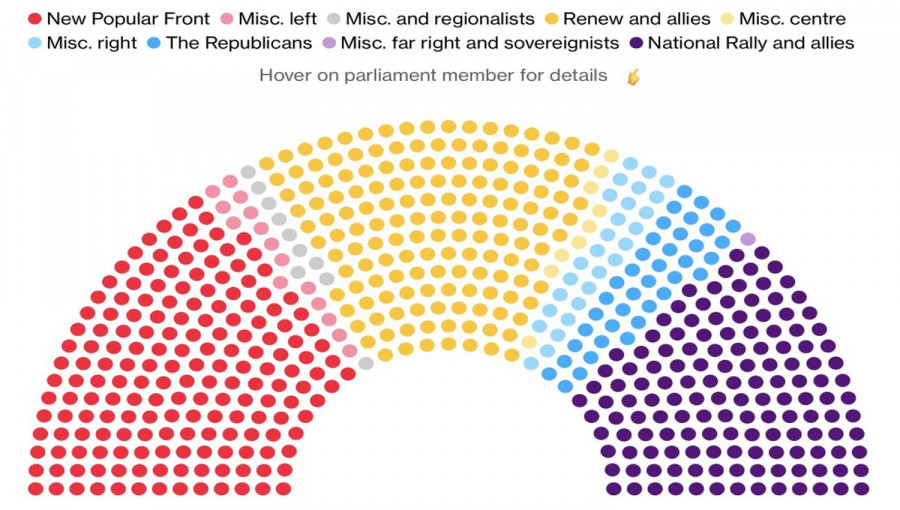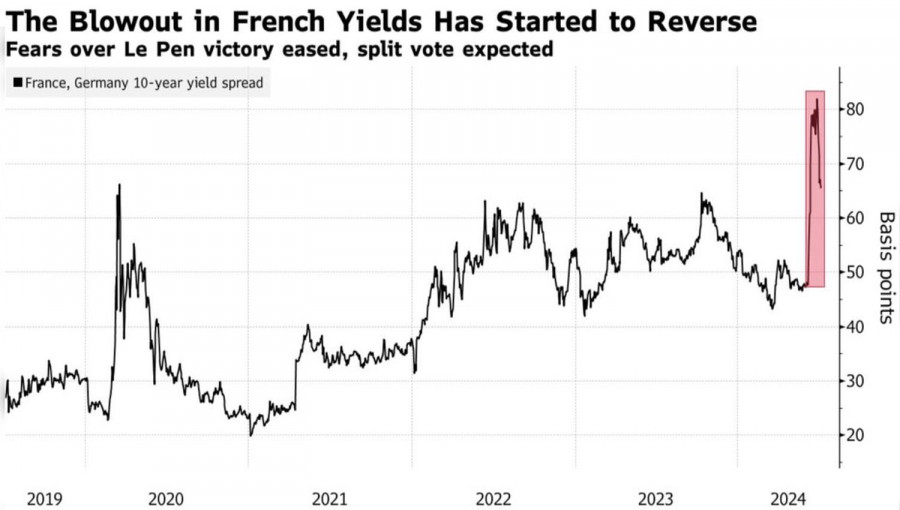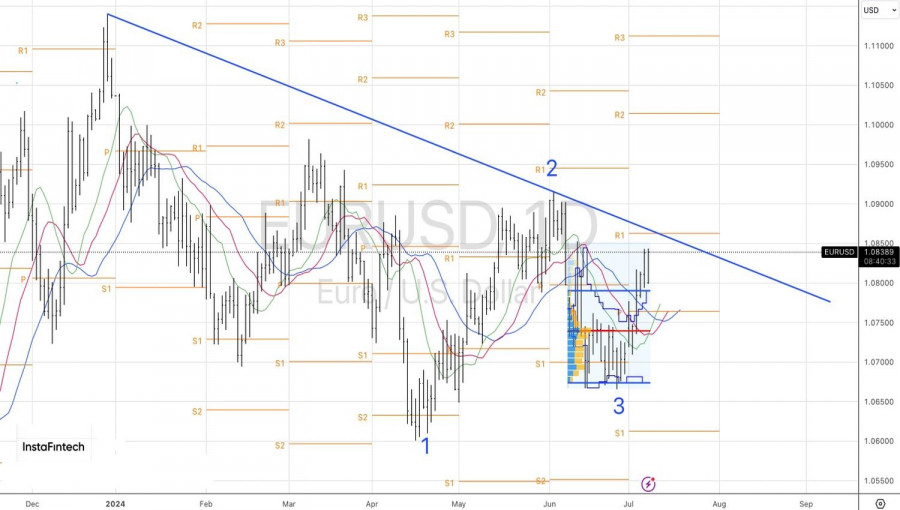
Choosing the lesser of two evils is a common practice. However, no one knows if it will be the right choice. By uniting, political parties in France prevented the right-wing from coming to power. However, the left won the most seats in the French parliament. Their agenda of lowering the retirement age from 64 to 60, increasing salaries for public servants, reintroducing the wealth tax, and their unwillingness to comply with EU demands is far more dangerous than that of the National Rally. It's not surprising that EUR/USD experienced a gap during the Asian session, which, however, was quickly recouped.
Results of the French National Assembly Elections:

The supporters of Marine Le Pen, who won the first round, secured only 156 seats in the parliament. The victory was claimed by the New People's Front with 178 seats. Emmanuel Macron's Renaissance performed better than the polls indicated, securing 142 seats. The French president's risky gamble resulted in a divided parliament, where the left demands they be given the premiership, while the centrists have the opportunity to form a coalition and calm the financial markets.
The second round is over, but no one knows how it will actually end. EUR/USD bears believe that the left will become more active so they expect a confrontation with the EU. On the other hand, the bulls sees this as an excellent result so they started buying French assets that have fallen in price due to the political crisis.
Yield Spread Dynamics of French and German Bonds

In my opinion, the dark period for the euro is over. The major currency pair is on track to continue its upward movement if the Federal Reserve finally begins actively discussing the possibility of a rate cut in September. It's unlikely that the monetary easing cycle will start in June, but the Fed could certainly signal it at the next FOMC meeting. If Fed Chief Jerome Powell hints at possible rate cuts during his testimony before Congress on July 9-10, EUR/USD will have new reasons to be optimistic.
Democrats are calling for rate cuts amidst a significant cooling of American inflation and a slowing labor market. Unemployment rose to 4.1% in June, and the growth rate of average wages fell to 3.9%, the lowest level in three years. One should not be too optimistic about the stronger increase in non-farm employment in the US, as the previous data for April-May were revised down by 110,000.

Thus, the Fed can afford to consider lowering the federal funds rate, which would be logical given the further slowdown in consumer prices to 3.1% in June and the cracks in the labor market. However, let's see what Powell actually says.
Technically, on the daily chart, a 1-2-3 reversal pattern could be triggered for EUR/USD. For this to happen, a breakout of the trendline near 1.0865 is required. If this occurs, the price could move towards 1.09 and 1.0935. It is advisable to maintain a bullish bias.